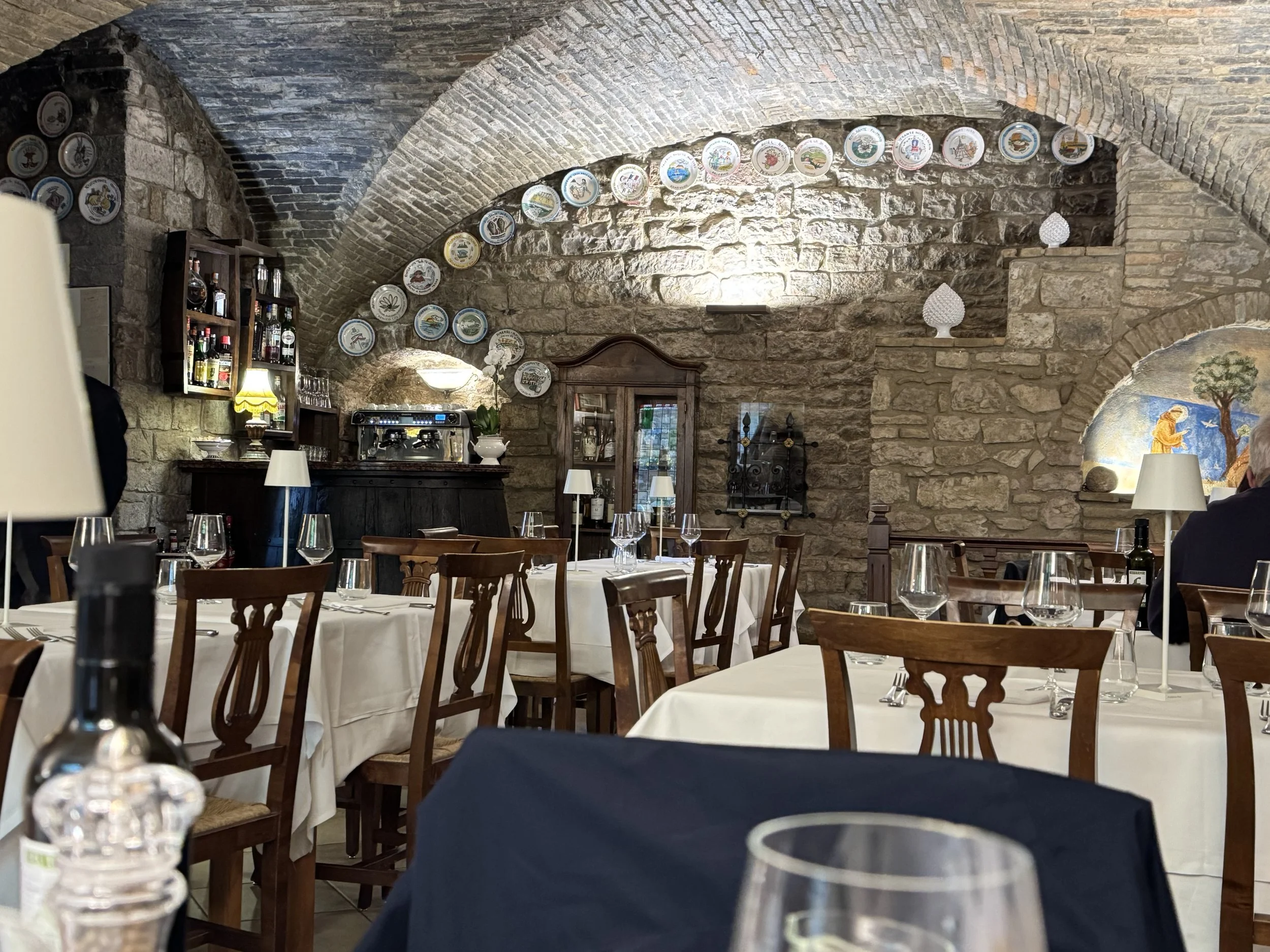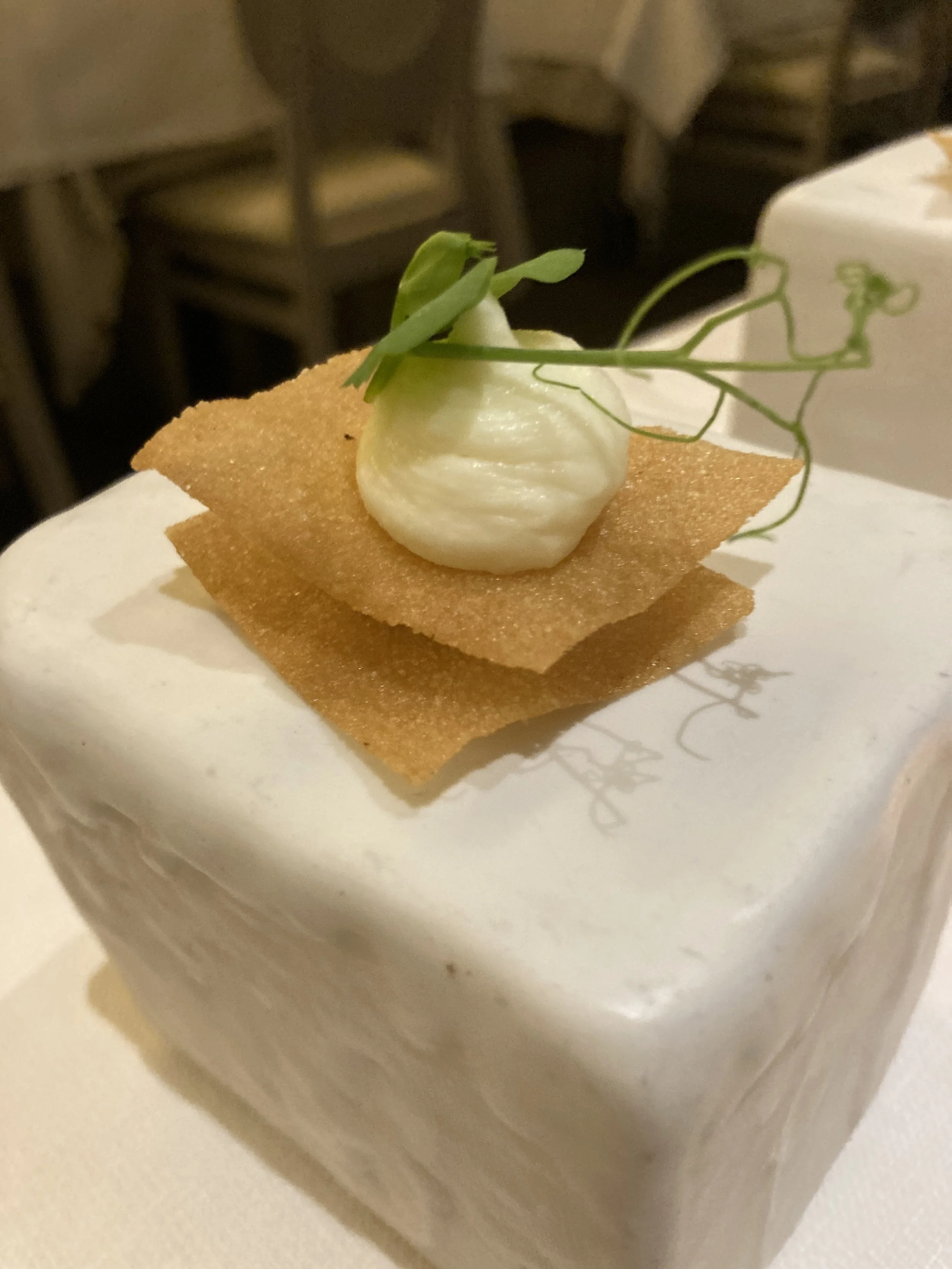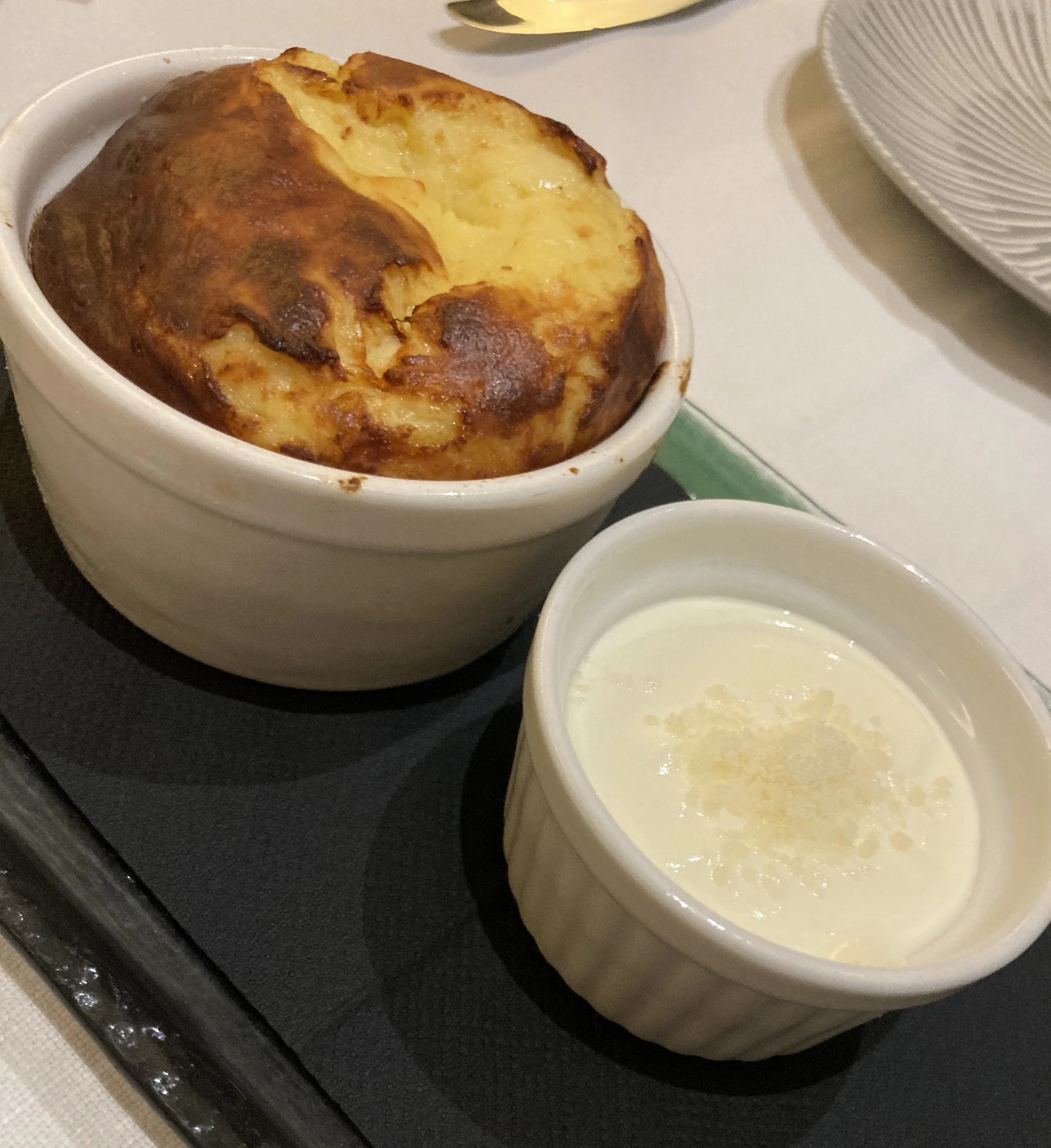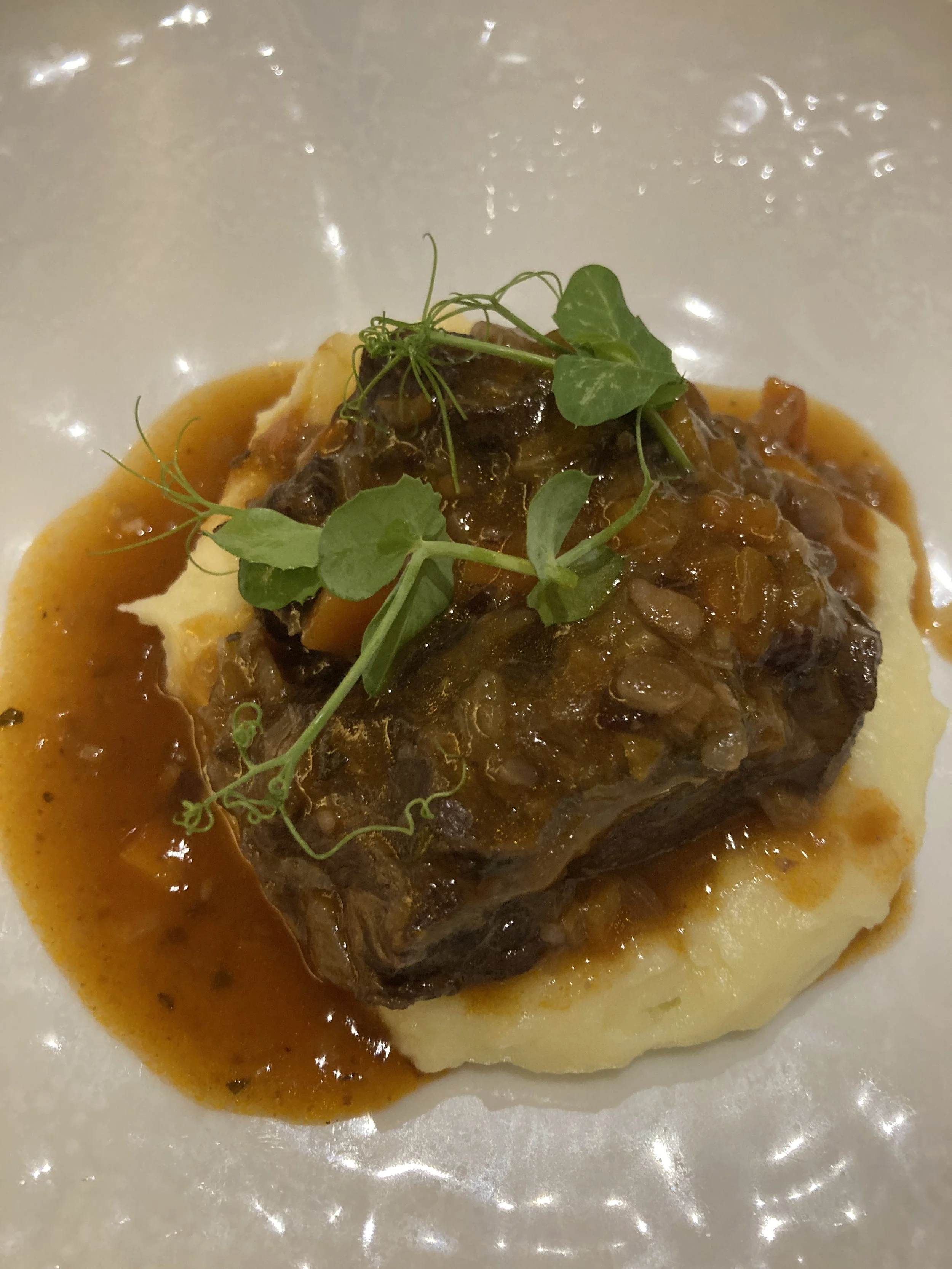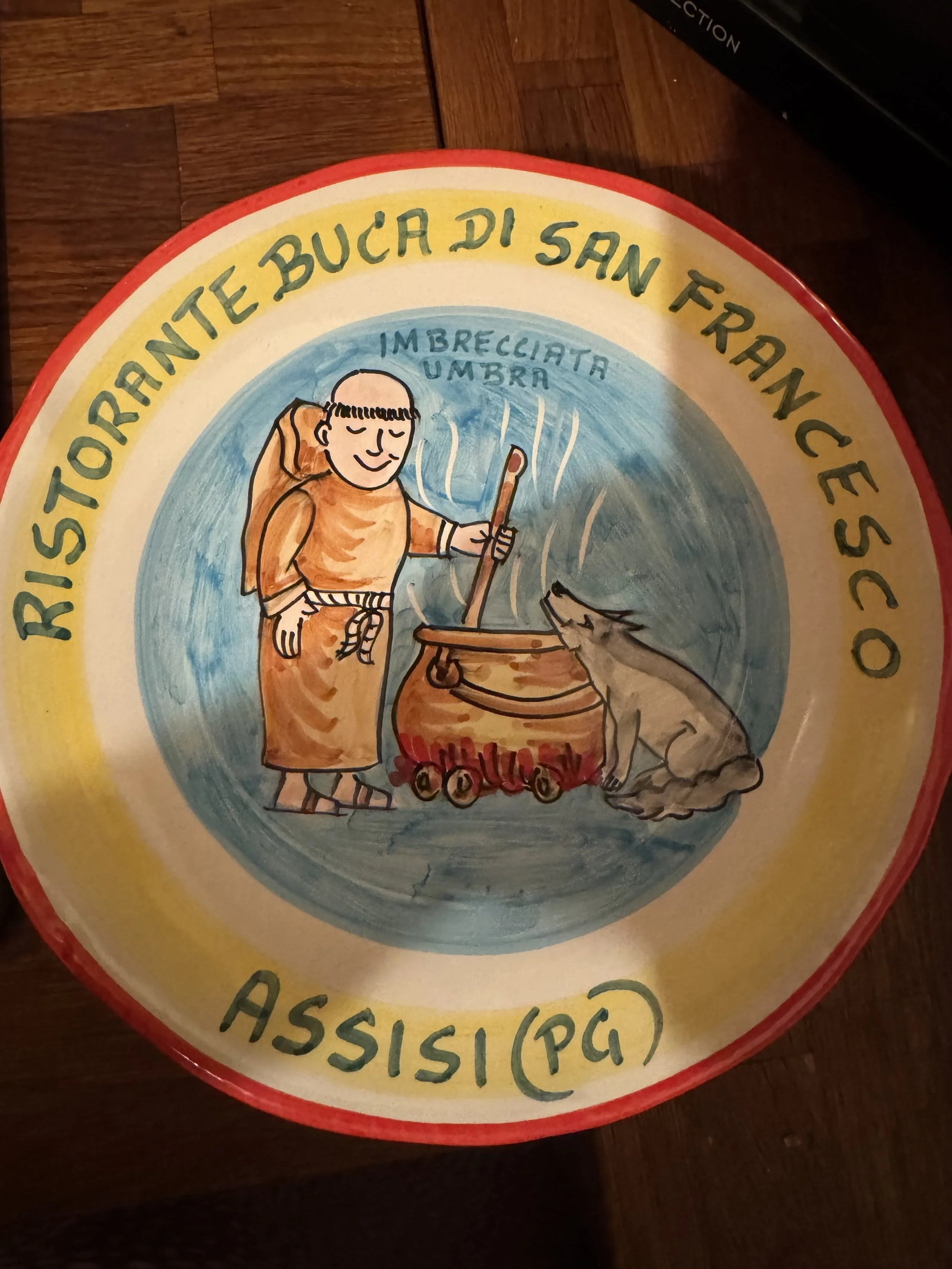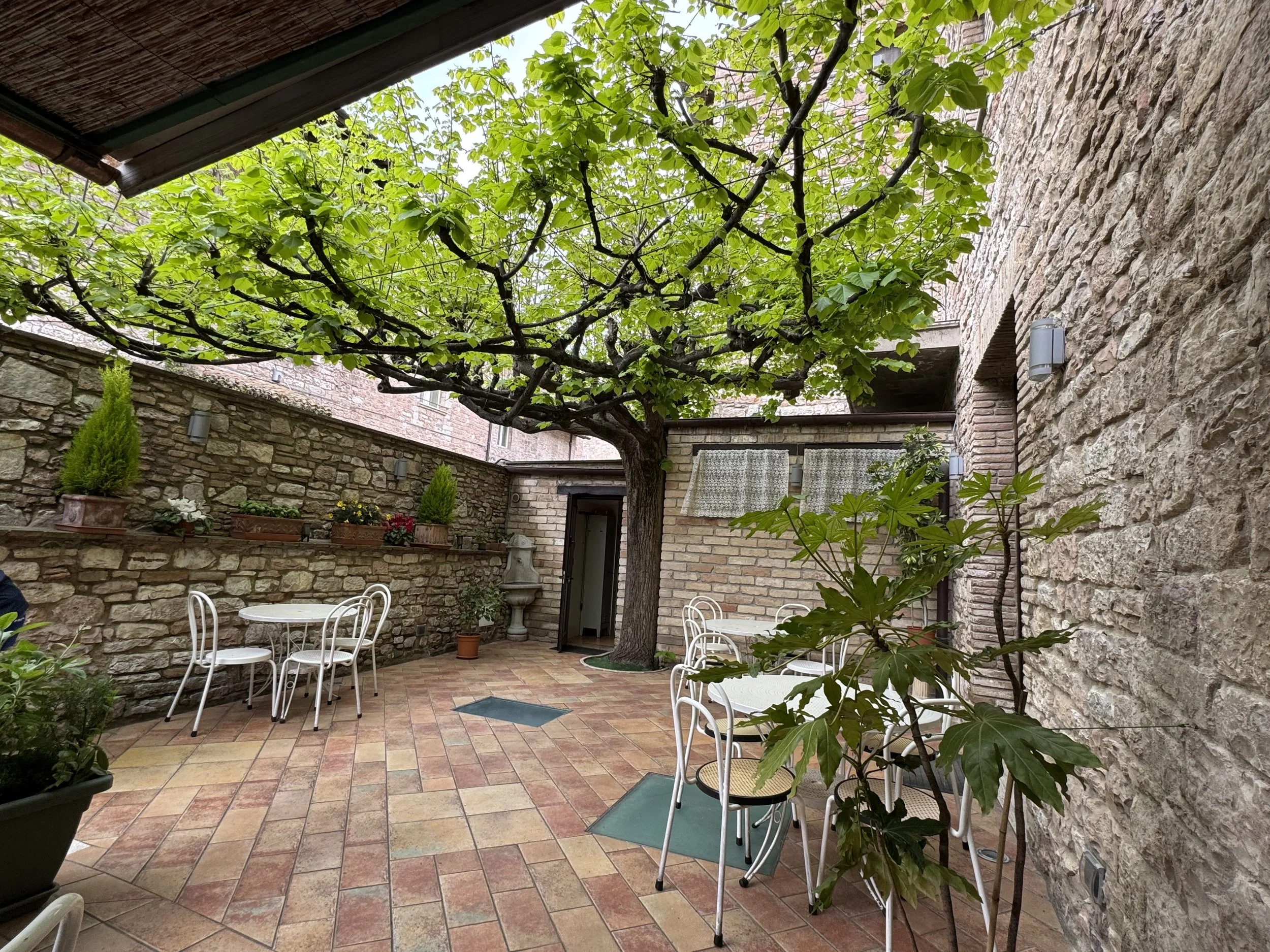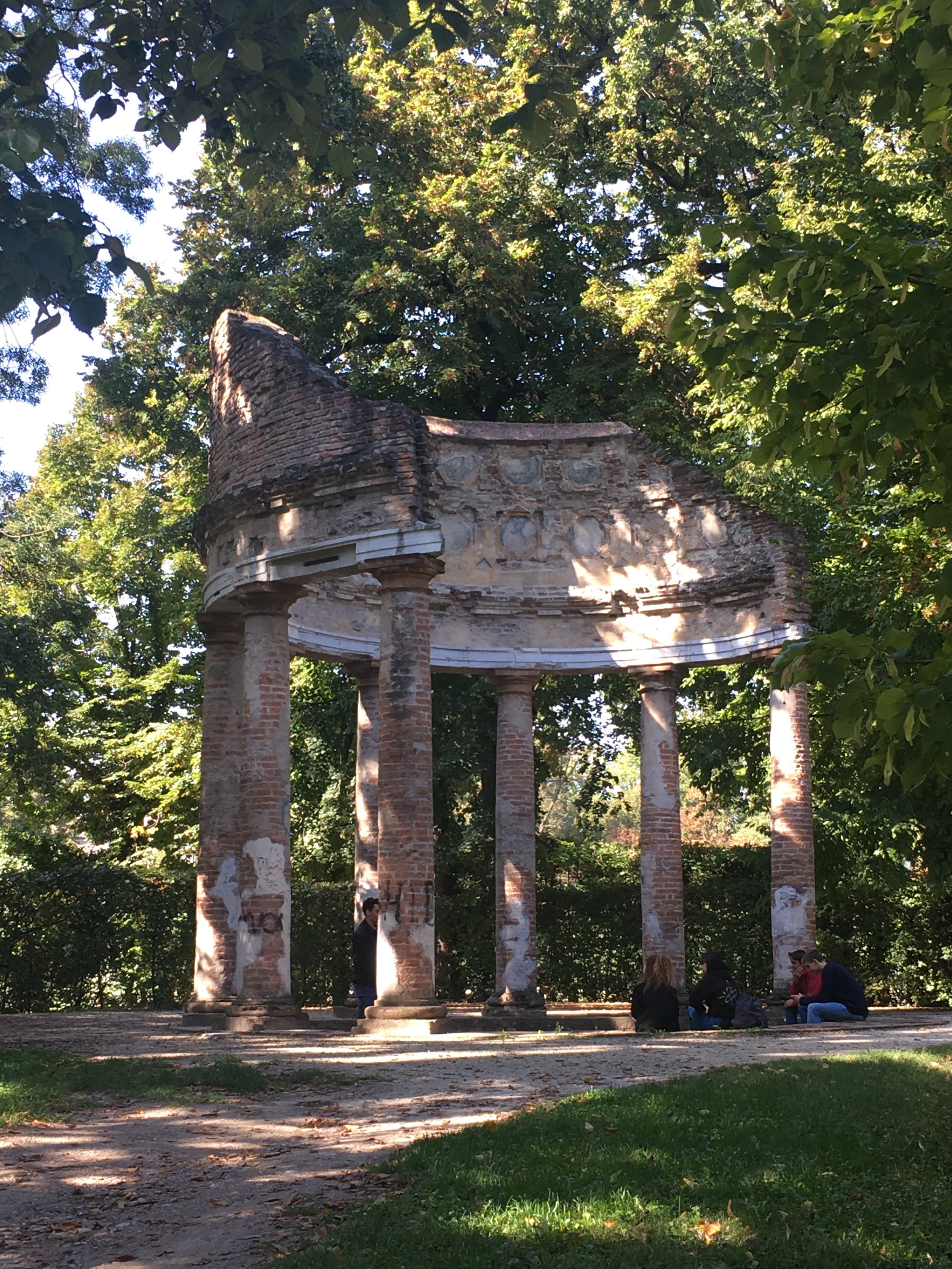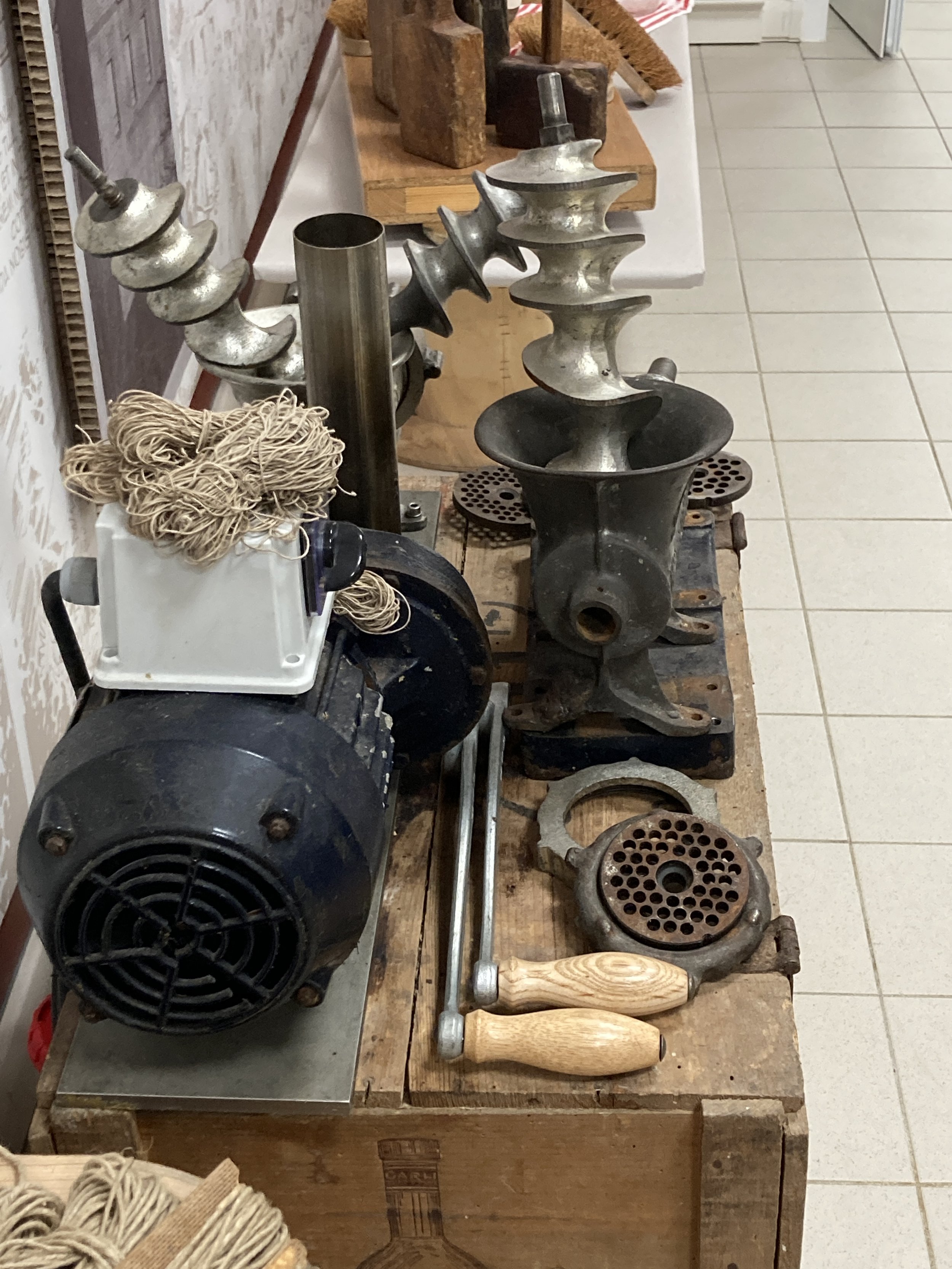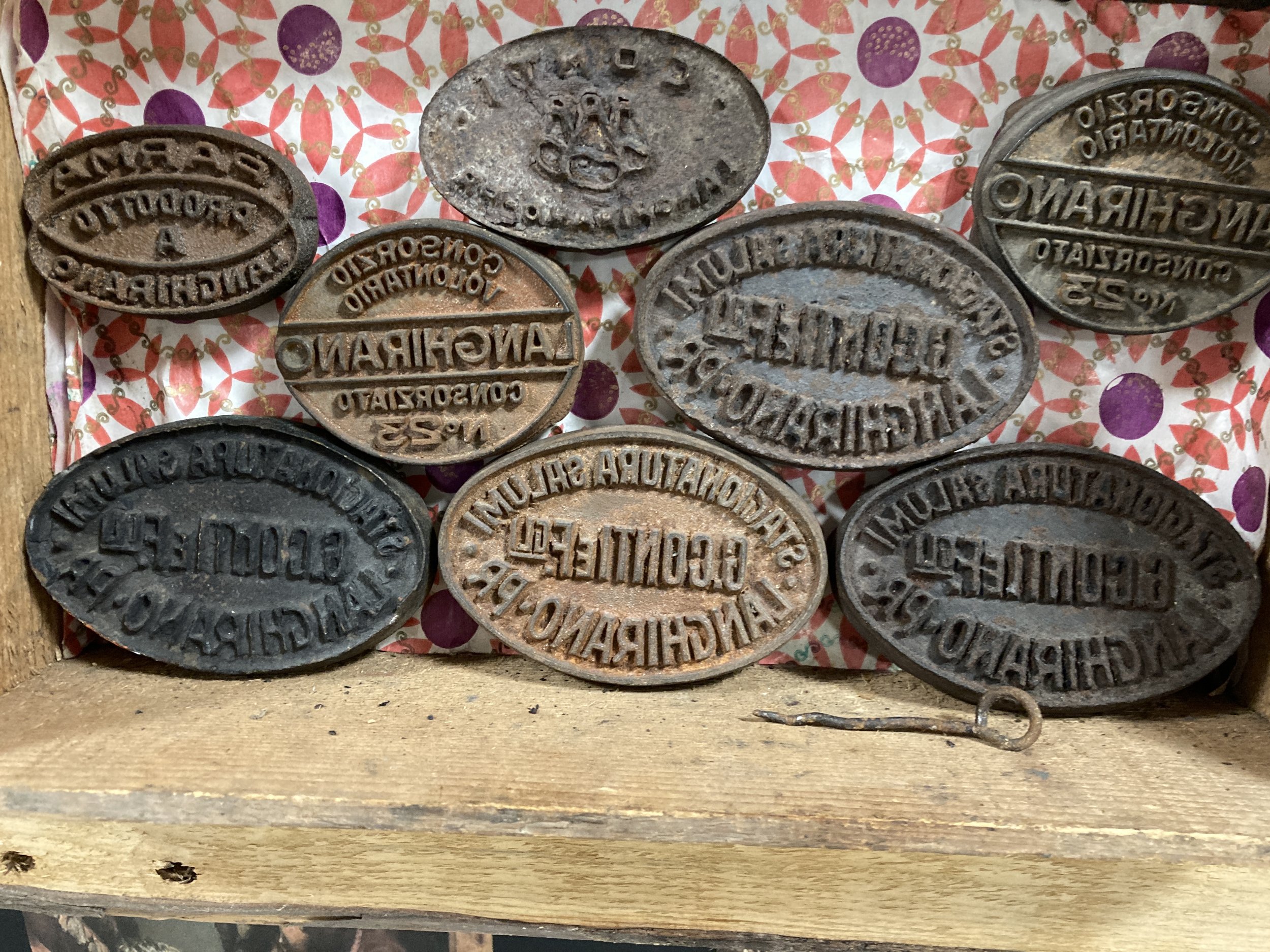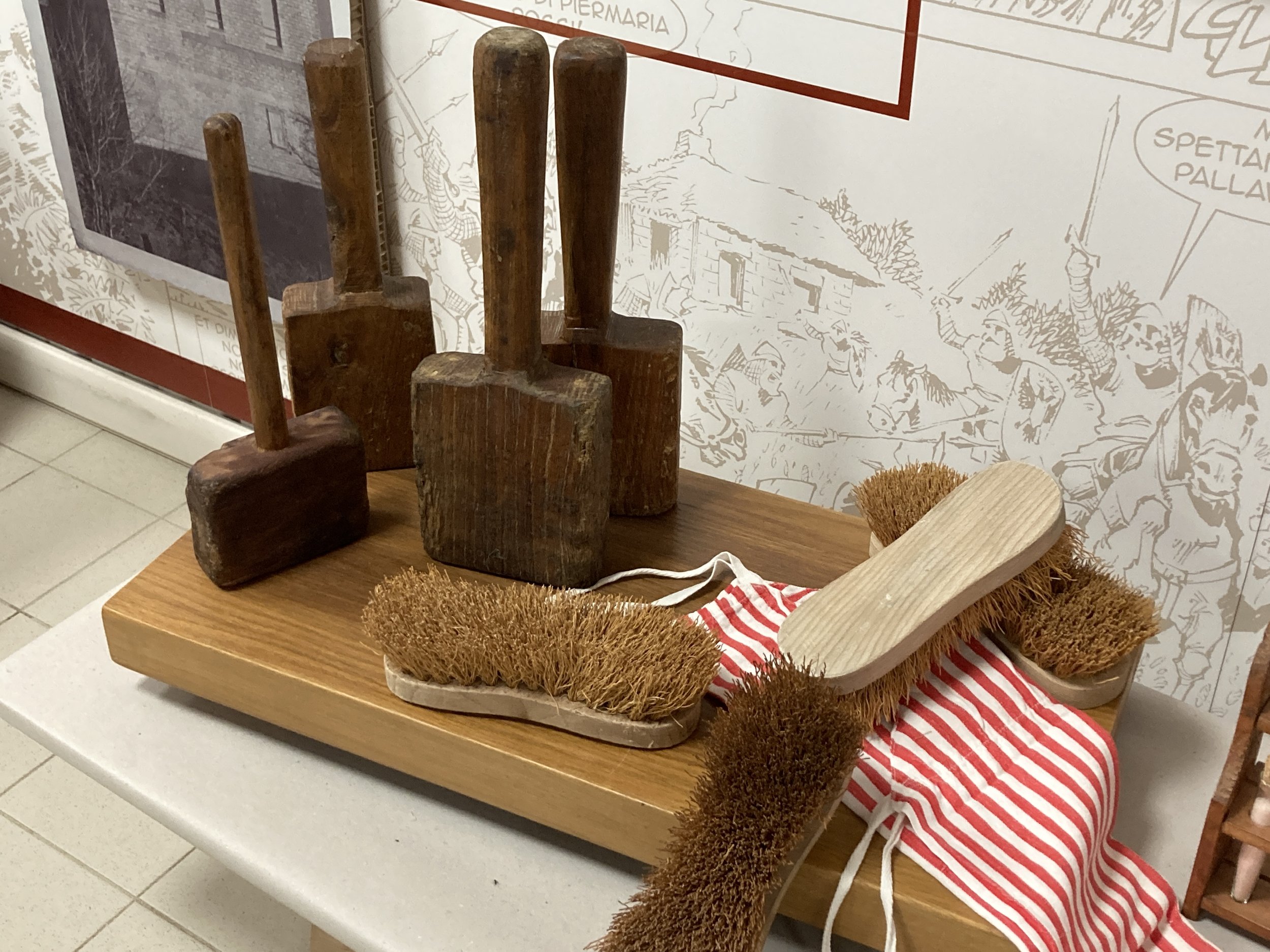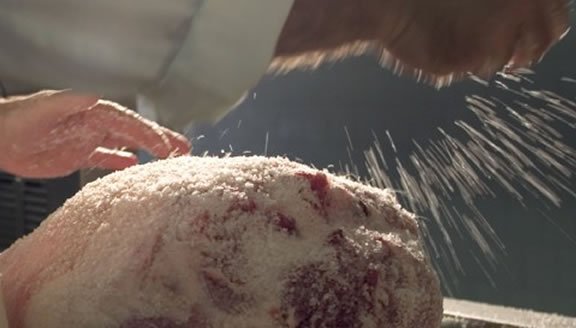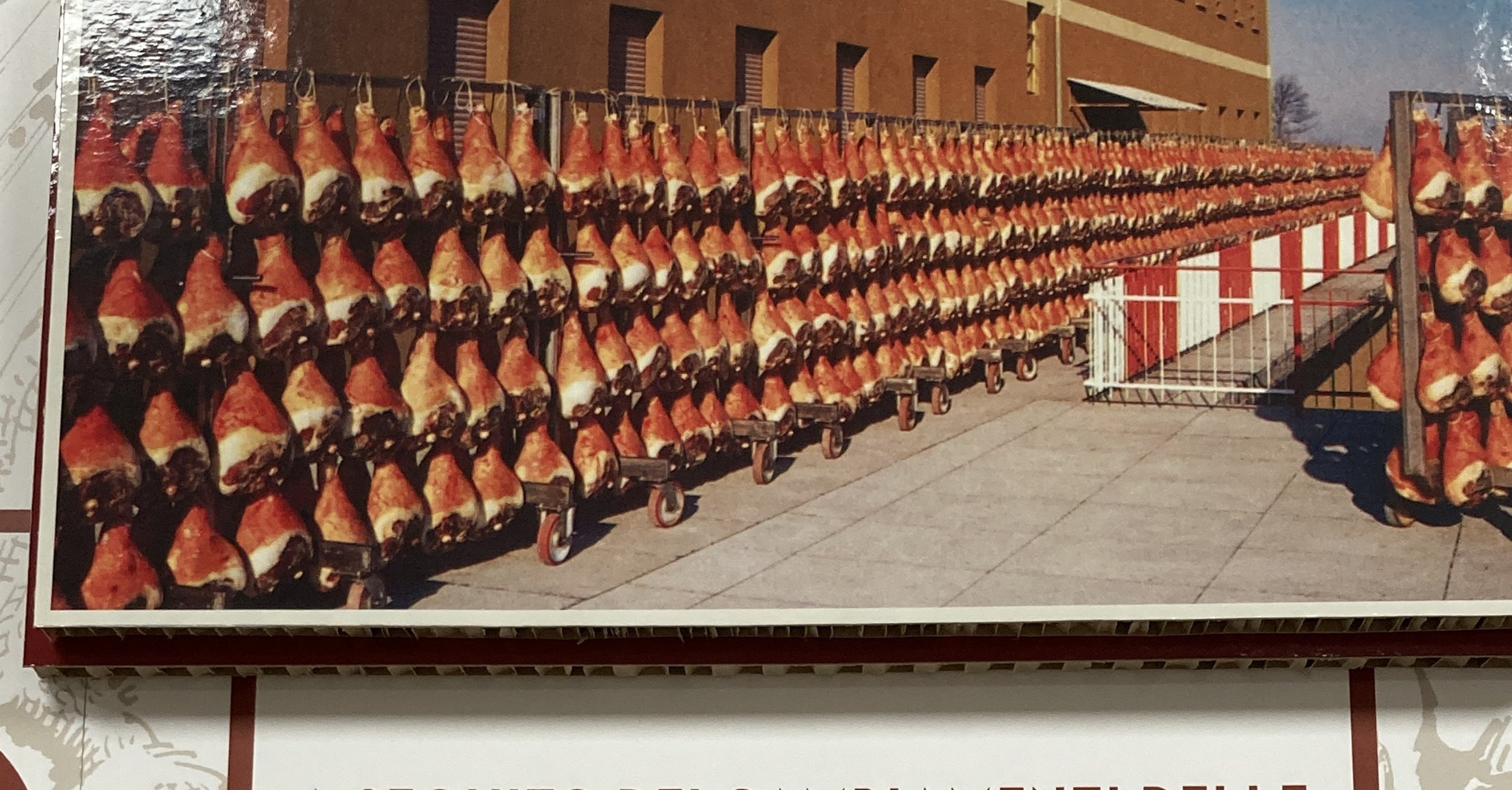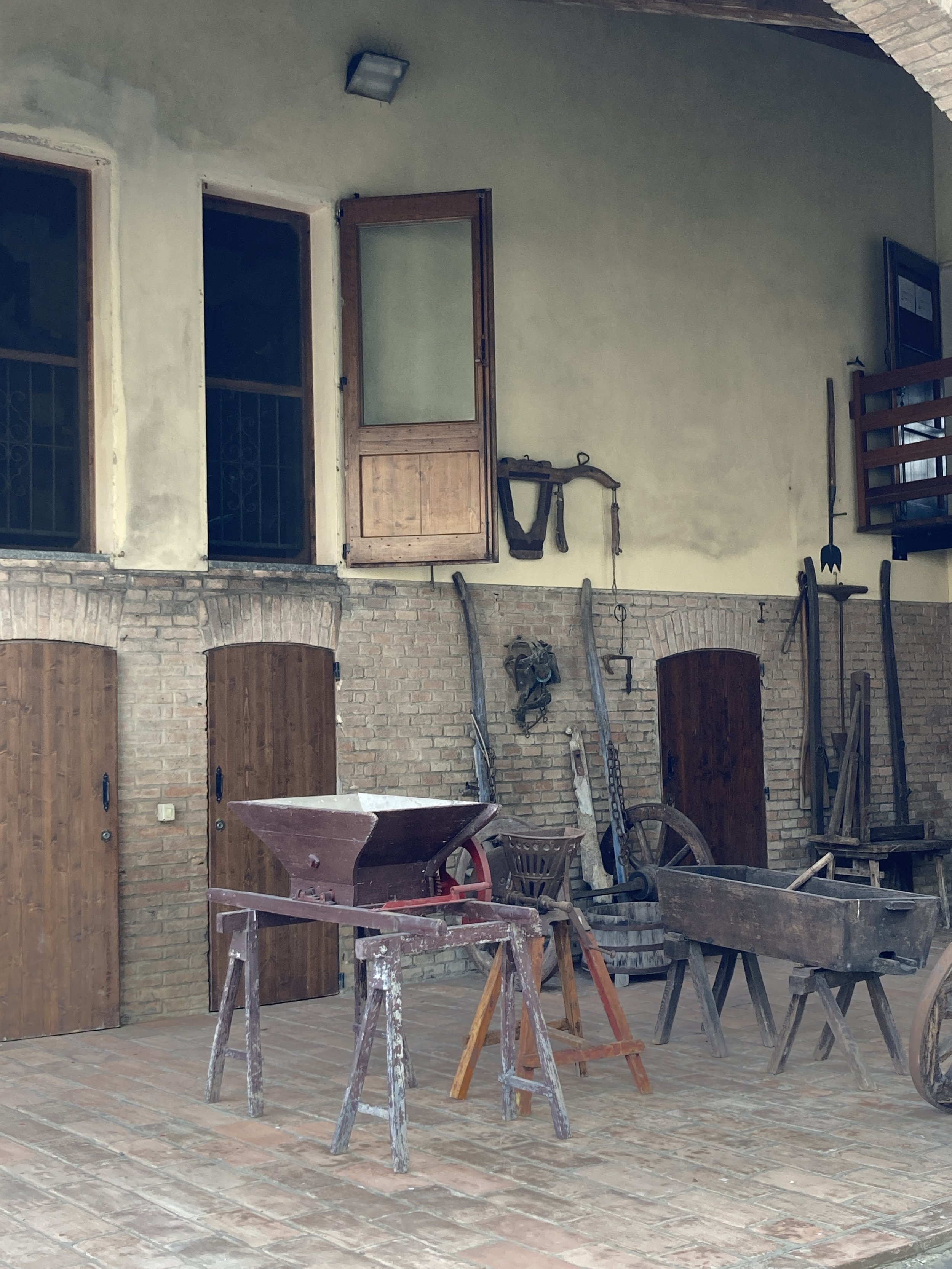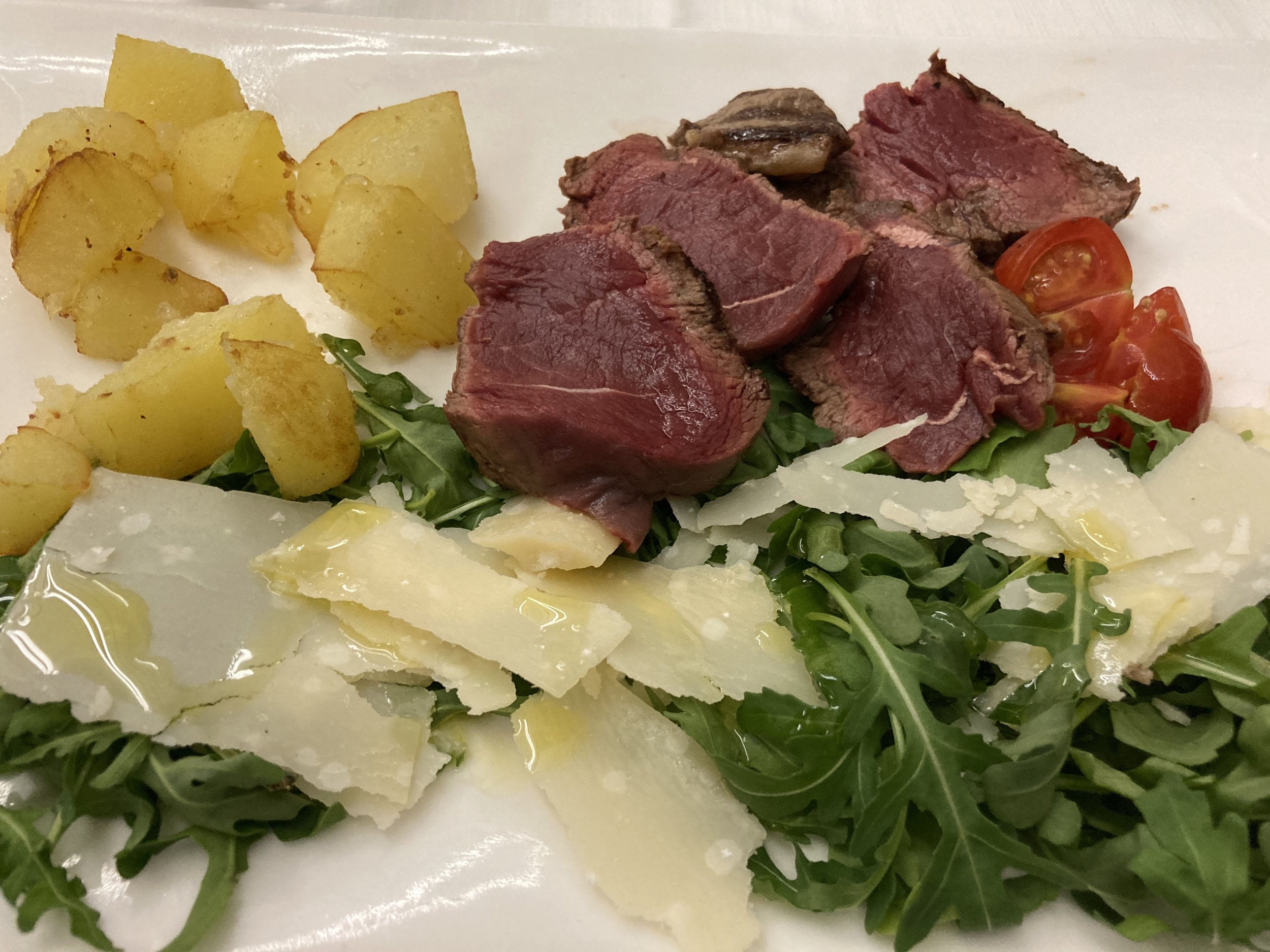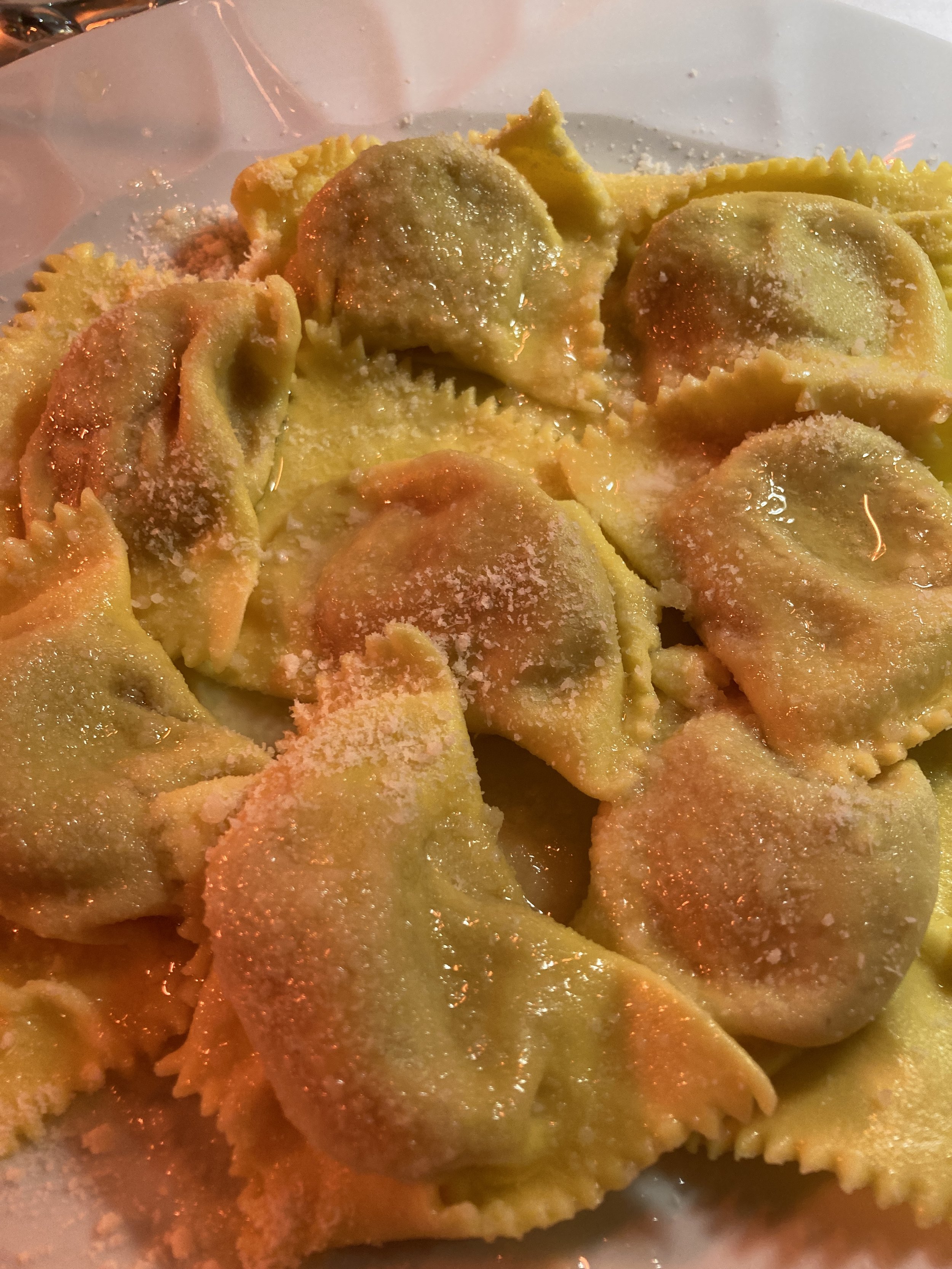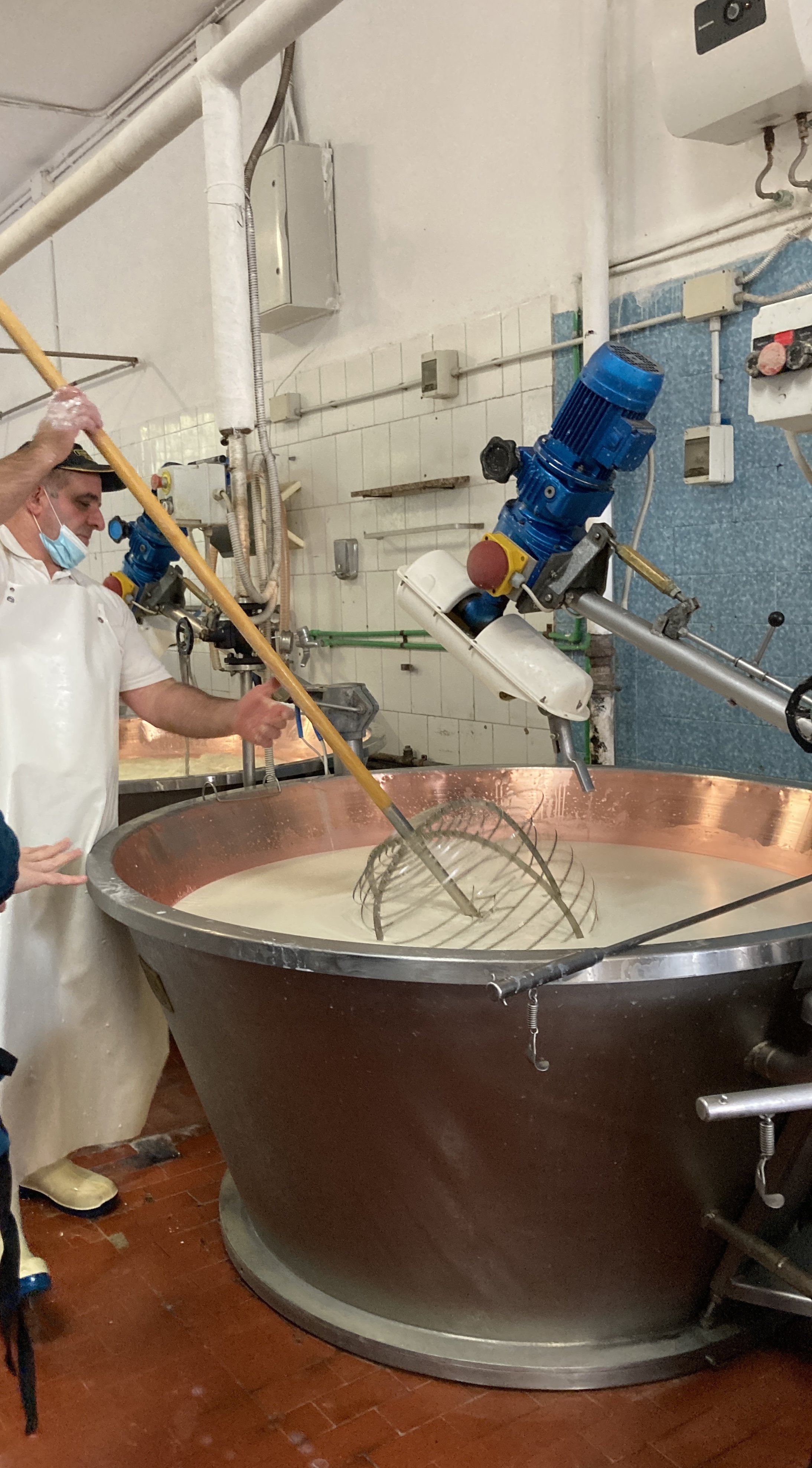Good Memories of Traditional Italian Cuisine - Part Two
The chef at Osteria La Techie designed this plate which was then hand-painted and boxed as a memory for those who ordered the special menu.
Last week I began writing about my first experience with the Ristoranti del Buon Ricordo – the group of Italian restaurants dedicated to traditional, local, and authentic foods. Each restaurant makes a signature dish that is represented in a unique hand painted plate. Order the dish and the collect a plate as a memory.
After dining at Osteria La Tecchia in Pietrasanta last winter, and taking home my first plate, I knew I had found a new hobby – searching out the Buon Ricordo restaurants and building my plate collection.
Since I was planning a spring-time vacation in Emilia-Romagna and Umbria, I searched for places belonging to the Unione Ristoranti del Buon Ricordo in the cities I planned to visit. From the list of participating places, I chose two to visit on my trip. The first was in Parma (Emilia-Romagna region) and the other in Assisi (Umbria).
In Parma, traditional ingredients include Proscuitto di Parma (and heaven help the person that calls it simply “prosciutto”) and Parmigiano Reggiano cheese. Both were featured in the dishes at La Forchetta, an upscale restaurant, where they use classic flavors, sometimes in non-traditional ways.
Earning a take-home plate from La Forchetta required ordering the full Buon Ricordo menu - an antipasto (starter), a primi (first course), a secondo (main dish) and a dolci (dessert). That’s a big meal so my travel companion and I decided (after discussing it with the server) to share the primi. One problem - at the end of the meal we were told that we should have ordered two of them if we wanted to each take home a plate and that since we shared we could only have one plate! Definitely not ok since we specifically requested the Buon Ricordo menu so we’d each earn a plate and it was the server’s suggestion to share the starter. It took a little negotiating, thank goodness I’ve learned to argue in Italian, but in the end, we did each take home a plate (because of course I’ve now hooked my friend on collecting them too). Lesson learned - clarify ahead of time exactly what needs to be ordered to get the plate!
The meal started with an “amuse bouche” (if there is an Italian word for this little pre-meal tease I do not know it). Almost too pretty to eat, it was a small dab of Parmigiano Reggiano mousse on a crisp wafer, served on a chilled stone block (left photo below). Pretty fancy!
Our shared primi was a rich yet delicate soufflè with a parmigiano-reggiano cream topping. Plenty to share, but good enough to eat the whole thing. This dish was swoon-worthy; I may have to make a trip back to Parma just to taste it again.
Next came the specialty dish, a risotto with radicchio, Prosciutto di Parma dust, and gel di ribes (current jelly) topped with a Parmigiano-Reggiano cream. The flavors were unexpected and each bite was just a little different, savory with the cream, a bit sweet with the currents, slightly bitter with the radicchio. Wonderful! We were given a choice of secondi. I had guanciale di vitello (veal cheek) in a red wine reduction with creamy potatoes. Tender, deeply flavorful, and delicious. My friend opted for lamb chops crusted with pistachio, another great choice. Desert was a classic tiramisu. Are you getting hungry yet? I am hungry just remembering this meal.
Plate #3 !
A few days later, it was on to Assisi and the Ristorante Buca di San Francesco. This family-run restaurant, set in a Medieval building near the Basilica, has a warm and cozy interior and a charming outdoor patio. The staff were warm, friendly, and helpful in explaining the dishes. Somehow they made it feel like we were dining in their home. Here you only need to order the Buon Ricordo specialty dish (not an entire menu) to earn a take-home plate. The specialty depicted on the plate is a soup typical of this part of Umbria, a type of cucina povera, the food of peasants.
Umbria is known for growing a variety of legumes and grains and this soup brings them all together in a happy chorus of beans, lentils, chickpeas, barley, and spelt. The rich flavor comes from the “holy trinity” of veggies – onion, carrots, celery – along with some garlic, lardo, olive oil, and spices. The soup is called Imbrecciata Umbra (not a typo, it is Umbra not Umbria in this use). On the plate Saint Francis stirs a cauldron of it as a wolf keeps watch. This soup, simple but with complex flavors, was definitely memorable.
Imbrecciata Umbra
The soup was followed by agnello (lamb) scottadito (scotta = burned, dito = finger) for me. Thin, flavorful, and tender they were delicious (though I did use knife and fork rather than burn my fingers). For my travel companion, another traditional dish, spezzatini di cinghiale (stewed boar) with polenta. Both were delicious, but it was hard to top the soup!
Each of my three dining experiences at Buon Ricordo restaurants (so far!) were different, which is really the point. Every one reflected local ingredients and traditional, regional foods. The atmospheres ranged from simple to cozy to elegant, with the foods matching the setting. I would be hard pressed to name a favorite, but my memory is strongest of that soup !
And now I have 3 colorful plates to remind me of those culinary memories. I will have fun searching for my next “plate” restaurant and adding to my collection. To find restaurant locations go to the website for the Union deli Ristorante del Buon Ricordo - www.buonricordo.it
The pretty potion at Buca di San Francesco, Assisi
